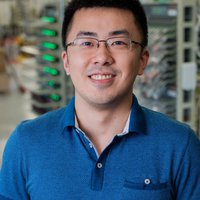Ming Gong, an Assistant Professor at Fudan University,
focuses on the basic chemistry problems underlying energy conversion, and
develop low-cost, viable materials for potential energy applications. His works have attracted great attention
from his peers as well as the general media and have been reported on by the BBC,
ABC, CNN, and many more.
Ming Gong's main research is hydrogen production from water
electrolysis. By adopting the strategy of inorganic/nano-carbon hybrid
materials, he developed NiFe layered double hydroxide-based oxygen evolution
catalysts and NiO/Ni heterostructure-based hydrogen evolution electrocatalysts
with superior activity and stability as compared to traditional precious-metal
based electrocatalysts. By combining the developed catalysts, a low-cost and
highly efficient water electrolyzer with <1.5 V voltage power was developed
for the first time, paving the road for future hydrogen economy.
Because both solar and wind energy are facing a spatial and
temporal distribution problem as cheap renewables, hydrogen may be the key
solution. Ming Gong developed photoelectrochemical systems based on solar
energy. For efficient storage of renewable energy, he coupled solar
cells with developed electrolyzers to achieve a water photolyzer with 15%
solar to hydrogen efficiency based on low-cost materials.
Ming Gong's attitude towards scientific research and
industrial development is both optimistic and cautious. He believes that new
energy technologies, such as hydrogen, are promising and at the same
time, he wants to also focus on practical applications and possible potential
problems; for example, whether hydrogen will have an impact on the
environment. He said that hydrogen can escape from the earth, but is currently
not very dominant due to limited hydrogen use. He believes we should
consider whether it would pose other problems for the environment, such as the
ozone layer, if its energy use increases rapidly in the future, and efforts
should be taken to improve hydrogen storage and transportation.
As for the future, he wants to consider how to "soft
land" from today's fossil-centric energy system to a sustainable energy
system with renewable energy as an important component. From the perspective of
a chemist, he will work with his team to provide new solutions from the
principles of chemistry on a molecular level.




